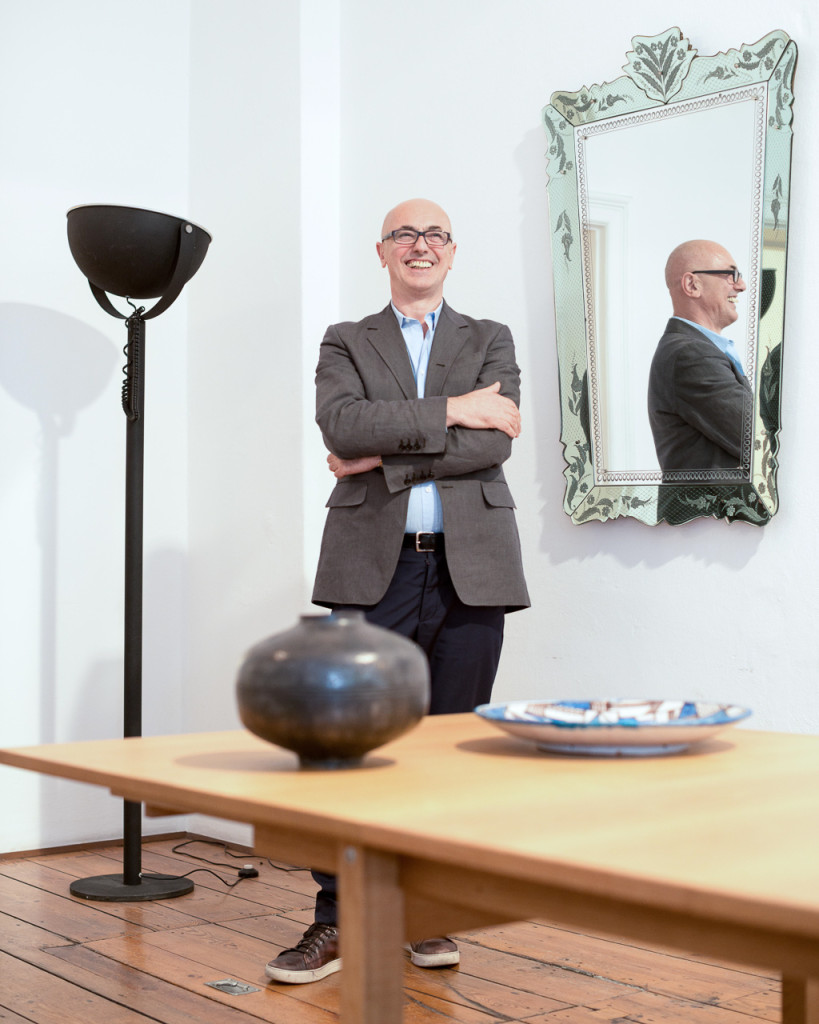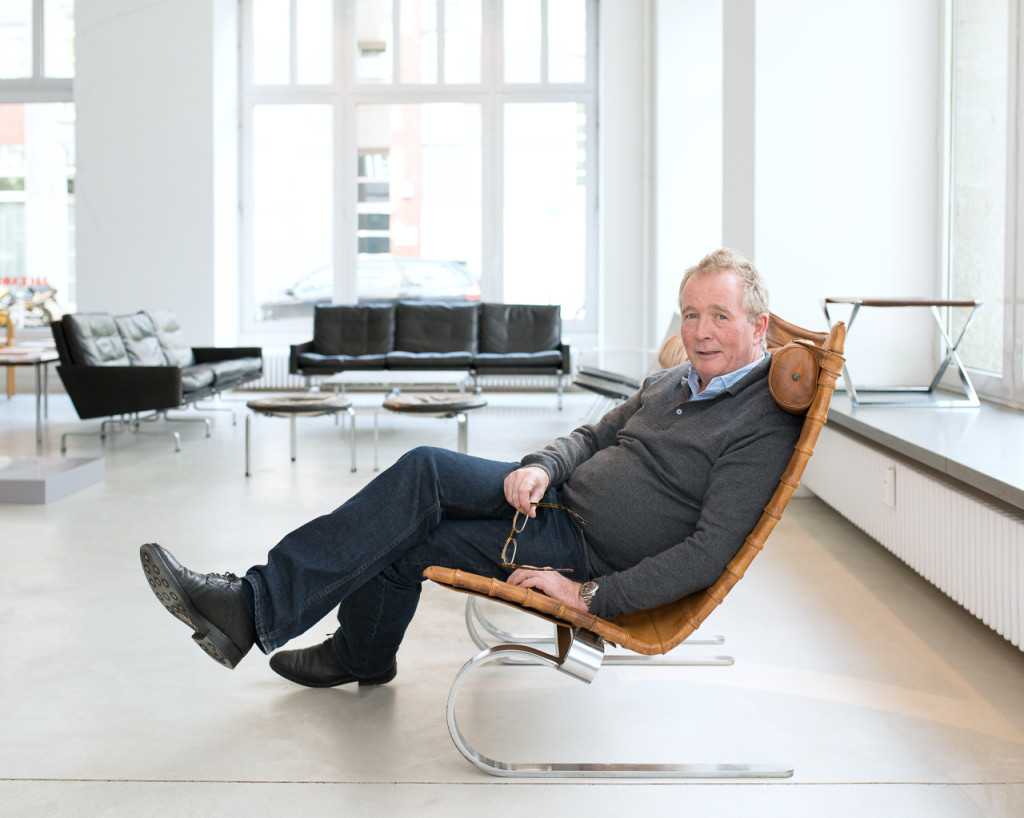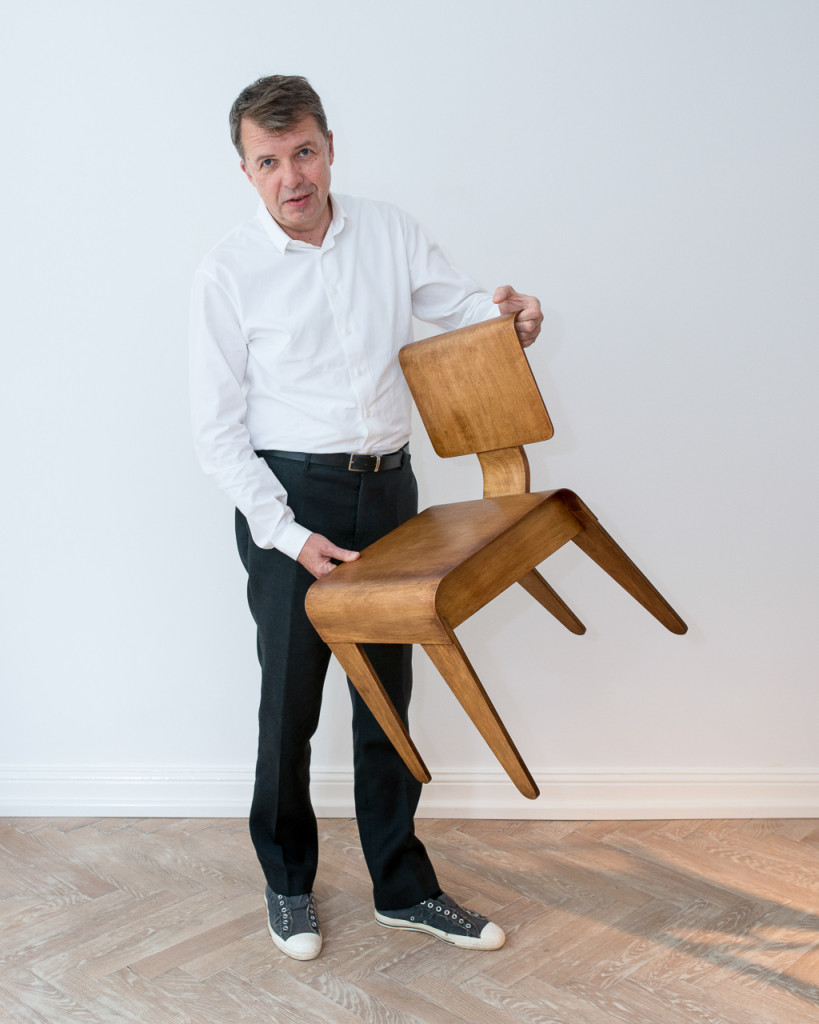The city’s top five, can’t-miss design galleries
Berlin’s Best
-
Firma London
Image © Kevin Mertens for L'AB/Pamono
-
Firma London
Image © Kevin Mertens for L'AB/Pamono
-
Firma London
Image © Kevin Mertens for L'AB/Pamono
-
Firma London
Image © Kevin Mertens for L'AB/Pamono
-
Firma London
Image © Kevin Mertens for L'AB/Pamono
-
Firma London
Image © Kevin Mertens for L'AB/Pamono
-
Firma London
Image © Kevin Mertens for L'AB/Pamono
-
Firma London
Image © Kevin Mertens for L'AB/Pamono
-
Galerie Ulrich Fiedler
Image © Kevin Mertens for L'AB/Pamono
-
Galerie Ulrich Fiedler
Image © Kevin Mertens for L'AB/Pamono
-
Galerie Ulrich Fiedler
Image © Kevin Mertens for L'AB/Pamono
-
Galerie Ulrich Fiedler
Image © Kevin Mertens for L'AB/Pamono
-
Galerie Ulrich Fiedler
Image © Kevin Mertens for L'AB/Pamono
-
Galerie Ulrich Fiedler
Image © Kevin Mertens for L'AB/Pamono
-
Galerie Ulrich Fiedler
Image © Kevin Mertens for L'AB/Pamono
-
Galerie Ulrich Fiedler
Image © Kevin Mertens for L'AB/Pamono
-
Zeitlos-Berlin
Image © Kevin Mertens for L'AB/Pamono
-
Zeitlos-Berlin
Image © Kevin Mertens for L'AB/Pamono
-
Zeitlos-Berlin
Image © Kevin Mertens for L'AB/Pamono
-
Zeitlos-Berlin
Image © Kevin Mertens for L'AB/Pamono
-
Zeitlos-Berlin
Image © Kevin Mertens for L'AB/Pamono
-
Zeitlos-Berlin
Image © Kevin Mertens for L'AB/Pamono
-
Zeitlos-Berlin
Image © Kevin Mertens for L'AB/Pamono
-
Zeitlos-Berlin
Image © Kevin Mertens for L'AB/Pamono
-
Jacksons
Image © Kevin Mertens for L'AB/Pamono
-
Jacksons
Image © Kevin Mertens for L'AB/Pamono
-
Jacksons
Image © Kevin Mertens for L'AB/Pamono
-
Jacksons
Image © Kevin Mertens for L'AB/Pamono
-
Jacksons
Image © Kevin Mertens for L'AB/Pamono
-
Jacksons
Image © Kevin Mertens for L'AB/Pamono
-
Jacksons
Image © Kevin Mertens for L'AB/Pamono
-
Hans-Peter Jochum Gallery
Image © Kevin Mertens for L'AB/Pamono
-
Hans-Peter Jochum Gallery
Image © Kevin Mertens for L'AB/Pamono
-
Hans-Peter Jochum Gallery
Image © Kevin Mertens for L'AB/Pamono
-
Hans-Peter Jochum Gallery
Image © Kevin Mertens for L'AB/Pamono
-
Hans-Peter Jochum Gallery
Image © Kevin Mertens for L'AB/Pamono
-
Hans-Peter Jochum Gallery
Image © Kevin Mertens for L'AB/Pamono
-
Hans-Peter Jochum Gallery
Image © Kevin Mertens for L'AB/Pamono
-
Hans-Peter Jochum Gallery
Image © Kevin Mertens for L'AB/Pamono
-
Hans-Peter Jochum Gallery
Image © Kevin Mertens for L'AB/Pamono
-
Hans-Peter Jochum Gallery
Image © Kevin Mertens for L'AB/Pamono
-
Hans-Peter Jochum Gallery
Image © Kevin Mertens for L'AB/Pamono
In the nearly 25 years that have passed since the fall of the Berlin Wall (2014 marks the silver anniversary), the city has been transformed. Affordable spaces and an open, all-embracing vibe have spurred an influx of creativity and business. In the past ten years especially, the seductive mix of culture and industry has attracted both permanent transplants and tourists who recognize Berlin as a unique destination for overlapping and growing art, fashion, tech, and design scenes.
Today, diverse neighborhoods with decidedly unique personalities span this massive city—from the relatively raw to the more refined, both east and west—offering something for everyone. And this dynamism resonates throughout Berlin’s vibrant design gallery scene as well; while each embodies the city’s easygoing, smart, and incredibly sophisticated spirit, it does so in its own way. Below, we highlight the collections and characters behind the city’s best, absolutely don’t-miss design galleries for your next Berlin visit.
Hans-Peter Jochum
A Berlin staple for more than thirty years, Charlottenburg’s Hans-Peter Jochum gallery specializes in 20th-century European and American historical objects by everyone from Joe Colombo to Dieter Rams and Hans Wegner, as well as contemporary designers like Sven Temper and Jennifer Dengler. On a recent visit, the gallery featured a selection of Italian avant-garde pieces by Franco Albini and Ettore Sottsass, among others. A gorgeous, green Venetian mirror by Gio Ponti, for example, hung steps from a masculine Osvaldo Borsani sideboard and a curvaceous set of violet, ceramic, sculptural vases by Angelo Magiarotti. In the gallery’s front window, we ogled the Monofilo Chair, a white, netting-inspired nylon and metal 1960s piece designed by architect-trio Sergio Conti, Luciano Grassi, and Marisa Forlani. As Jochum notes, “This is where you put the most exceptional, exciting piece—always. It’s fun for me because, even after so many years, that piece is always changing.”
Asked to identify any all-time favorites from his collection, Jochum tells us, “The Watermelon by Gio Ponti is just so fun! He made maybe ten different pieces out of enamel, and they’re really rare. Usually, even if I love a piece very, very much, eventually I can let it go—but it’s so difficult with the melon!” he laughs.
Jochum—whose smile, for the record, is absolutely contagious—moved to Berlin from southwestern Germany in the seventies. He started out in the theater world as a costume and stage designer, but soon realized he wanted to run his own show, and launched his gallery in 1981. Over the past few decades, the gallery has had a few homes across Berlin; presently, it consists of one main gallery space, with rotating highlights from the collection, plus a nearby exhibition location. In the next few months, Jochum will move his two existing Charlottenburg locations into one larger space (“three times our current space!”) just down the street. He looks forward to having the room both to share his main inventory and to stage larger exhibitions. Already on the horizon? An exhibit on systems furniture design and an ambitious look at the history of German design from the twenties to the sixties.
Jacksons
Englishman Paul Jackson opened his first eponymous gallery in the heart of Stockholm in 1981. Six years ago, he opened the doors to a second location in Berlin’s artsy Kreuzberg district. The gallery specializes in primarily Scandinavian design from roughly 1890 through 1980, and the collection is substantial, ranging from furniture and textiles to lighting and ceramics.
Jackson began working in design shortly after arriving in Stockholm in the early ’80s, and dove right in. Looking back, he laughs, saying, “It’s been a long time.” He goes on, “At first, no one was really interested in design, so it’s been fantastic to be on the whole journey and see how celebrated it is today.” What drew him to Berlin? “Well, the space is just beautiful, and as so many people are coming to Berlin, including art collectors, it just made sense for us to be here as well.”
The Berlin showroom hosts three exhibitions a year. Previous iterations have included The Cabinet Maker, an examination of the collaborative relationship between designer and cabinetmaker in 20th century Denmark and Sweden, as well as shows on Josef Frank and Alvar Aalto, among others.
Presently, Jacksons’ airy space features a fantastic show about midcentury Danish furniture designer Poul Kjærholm, who, contrary to many of his contemporaries, chose to work primarily in steel rather than wood. He combined his steel frames with materials that would become more beautiful with age, like leather, woven rattan, and rich canvases.
Highlights include the Flagline chair (also known as Element), Kjærholm’s 1951 graduation project from the School of Applied Arts in Copenhagen, which is composed of a single, continuous steel frame—no joints or connections; the matte chromed, spring-steel-framed PK-20 chairs in buttery leathers; and Jackson’s personal favorite, a delicate yet strong pair of 1952 Holscher chairs. The Holschers were manufactured exclusively for Kjærholm’s friends and family; made of steel and wound flag halyard, they were named for blacksmith Svend Holscher, the father of one of Kjærholm’s friends and the man behind the steel tube construction. Also not to be overlooked: a gorgeous, 1956 tiered candelabra called PK-101; large enough to hold 33 candles, it casts a phenomenal shadow in the natural-light-filled gallery. The show runs through December.
Zeitlos-Berlin
Not far from the L’AB offices, Zeitlos-Berlin makes its home in the glassy Stilwerk building on Kantstrasse. Founder Uwe Mönnikes launched his gallery here in 1999 when Stilwerk design market first opened its doors, and Zeitlos has since become a go-to source for interior designers, architects, museums, and all other design lovers who salivate over rare pieces from the Bauhaus, Art Deco, and Streamline Moderne movements. The 500-square-meter gallery’s décor is inspired by old zeppelin interiors and 1930s haunts, and includes accents like vintage Bakelite and silver, circular wall lamps that feature lit-up photos from the era. On the day we visited, old jazz standards filled the air, further reinforcing a sense of stepping back in time.
The gallery’s approach is multi-pronged: In addition to museum-quality pieces and a regular program of curated exhibitions, Zeitlos offers high-end restoration services (using authentic techniques, colors, hardware and materials, as well as, when applicable, vintage tools, such as 1930s spray pistols for coloring), plus a line of new Bauhaus-inspired lamps called The Forgotten Designs that are intended to complement the originals. They are designed and manufactured in-house—often in nickel, which patinates well to give the impression of old German silver-plating.
Mönnikes himself grew up in northern Westphalia, and caught the design bug early. “Even as a young boy, I was crazy about beautiful shapes. At 16, I began collecting a little German design, from thrift stores mainly, plus there was a perfume company in town whose employees made a lot of money, and so every few years they’d renovate and get rid of all their interiors. So I’d buy them, keep some, and resell others.” At 18, he started his own nightclub and bar business, but by the time he was 27, he was ready to “come back to my roots.” So Mönnikes became an antique dealer, working with Biedermeier, then Art Nouveau and even old technical instruments before “coming back to the thing that I always loved—German Bauhaus style.”
Galerie Ulrich Fiedler
Founded in 1986 by partners Ulrich Fiedler and Katherine Evers, Galerie Ulrich Fiedler specializes in pioneering works from the 20th century. Its collection ranges from proto-modernist design—as exemplified by a recent exhibition featuring two salon chairs (1828 and 1830) by Karl Friedrich Schinkel—on to the Arts and Crafts, Art Nouveau, Jugendstil, the avant garde of the 1920s, and the Italian and French knockouts of the ’50s and ’60s. As Fiedler puts it, “We try to deal with objects that are integral to the overall history of design. We look for pieces that are important for their ideas, rather than their materials or manufacturing. To us, it doesn’t matter if an object is aluminum or gold; it depends on the form and the idea behind it.”
Originally launched in Cologne, the gallery moved to Berlin’s Mitte neighborhood five years ago, and then to a gorgeous flat on Mommsenstrasse in Charlottenburg this past January. According to Fiedler, he and Evers were drawn by the area’s spaciousness and this particular street’s long history as an artist haunt.
Remarkably, the pair now has the luxury of, quite literally, living in a gallery. The front part of the flat is the showroom, and the back end the private living quarters. An open kitchen marks the dividing line between public and private. Fiedler says with a smile, “It’s such a pleasure for us to be constantly surrounded by these pieces.”
Fiedler—who projects a kind, quiet warmth—was still in school when he began collecting. “I was studying art history, and at first, it was just a passion project. I had no idea this would become my life. I wanted to improve my own collection, so I started dealing. And now it’s been almost thirty years.”
He goes on, “One of the first pieces I found was a Mies van der Rohe armchair. I was already an admirer of modernist design, but then I saw how different an original could look in comparison to a re-edition, and I was overcome by this fascination with originality. I began looking for the very first examples of everything—the first executed pieces, the prototypes. I loved the patina and aura of these pieces. I began researching their origins, and it was incredible to figure out where these pieces were coming from. I went to libraries and looked for famous houses to try to find pieces. Normally the furniture wouldn’t be there anymore, but there was always someone you could find who’d know. That was the directive for my work initially. That approach isn’t really possible anymore, but that’s how it all started for me.”
Nearly three decades later, Galerie Ulrich Fiedler counts the Metropolitan Museum of Art, MoMA, and Centre Pompidou among its clients, as well as, more and more, private collectors. “I can’t be a collector because I’m a dealer,” Fiedler notes, “so I am very happy to find and hold these pieces for a little while. If I had the financial resources, I wouldn’t sell anything.” he says, laughing. “Our best clients have the collection I would have.”
Firma London
Despite what its name suggests, Firma London does, in fact, call Berlin home. German-born co-founders Florian von Holstein and Sandra Tietje met while living in London, and, on a “total whim,” moved to Berlin a little more than five years ago to open a gallery. They found their bright Charlottenburg space quickly, and essentially built their collection up from scratch. “As you can imagine,” von Holstein says with a chuckle, “it was quite empty in here at first, and there was a major learning curve those first few years. But we’ve been growing steadily, and our collection keeps getting better and better.”
That collection features mid 20th century furniture, lighting, and accessories with a just a touch of glamour. The roster runs the gamut from Gio Ponti, Ettore Sottsass, and Osvaldo Borsani to Eero Saarinen, Le Corbusier, and Charles and Ray Eames. At Firma London, an oh-so-cozy Hans Wegner Papa Bear chair sits comfortably by a decadent Tommaso Barbi hammered-brass, leaf-shaped floor lamp and a super-sophisticated 1960s Italian sputnik chandelier.
Firma London opened a second location last January—a by-invitation-only warehouse space in the city’s Kreuzberg district. Here, one can find additional works by the likes of Gaetano Pesce, Mies van der Rohe, Charles and Ray Eames, Herman Miller, and Artemide. And while there are undeniably playful pops throughout both spaces, von Holstein says he chooses pieces that can really be used by his clients.
Prior to opening Firma London, von Holstein spent the preceding two and a half decades in London, using his fine art background to work in a print gallery and then at vintage furniture gallery Decoratum. After so many years, he was excited to come home to “the new Berlin.”
“There’s an energy here, and a sense that things are really starting to happen. It’s like what I imagine New York had in the ’70s and London had in the ’80s. For years, Berlin was this sort of ghost town; then it was better known for students and parties. Even ten years ago, it was nice for parties, but not great for making money. But that’s started changing, and it’s becoming quite interesting. Nearly 25 years since the fall of the wall, it’s starting to become a serious market. Client-wise, while I’d say we do about 80 percent of our sales outside of Germany, lots of Germans are now moving to Berlin or have a second home here, because it’s quite cool. And there are a lot of foreign investors coming in as well to live. It’s a nice mix; the city seems to enjoy this blending of different cultures.”
-
Text by
-
Anna Carnick
Anna is Pamono’s Managing Editor. Her writing has appeared in several arts and culture publications, and she's edited over 20 books. Anna loves celebrating great artists, and seriously enjoys a good picnic.
-
-
Images by
-
Kevin Mertens
In addition to a fantastic eye, Kevin brings years of print and online photo-editing experience to L’ArcoBaleno. He is also a photographer who draws on his passion for helping others to create documentary photography.
-











































 Hans-Peter Jochum
© Kevin Mertens for L'AB/Pamono
Hans-Peter Jochum
© Kevin Mertens for L'AB/Pamono
 Paul Jackson
© Kevin Mertens for L'AB/Pamono
Paul Jackson
© Kevin Mertens for L'AB/Pamono
 Uwe Mönnikes
© Kevin Mertens for L'AB/Pamono
Uwe Mönnikes
© Kevin Mertens for L'AB/Pamono
 Ulrich Fiedler
© Kevin Mertens for L'AB/Pamono
Ulrich Fiedler
© Kevin Mertens for L'AB/Pamono
 Florian von Holstein
© Kevin Mertens for L'AB/Pamono
Florian von Holstein
© Kevin Mertens for L'AB/Pamono

